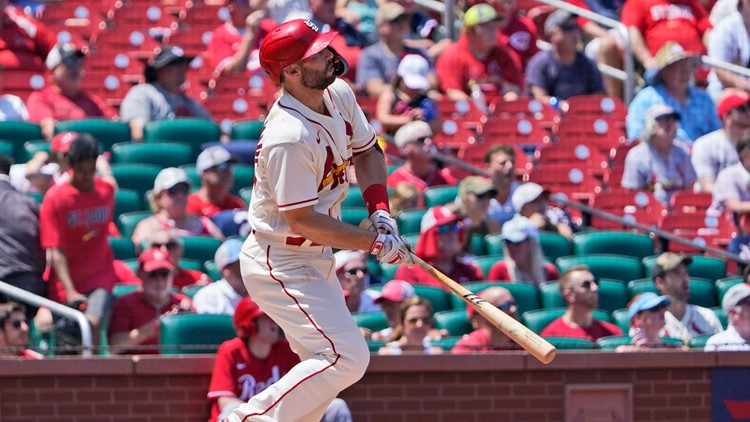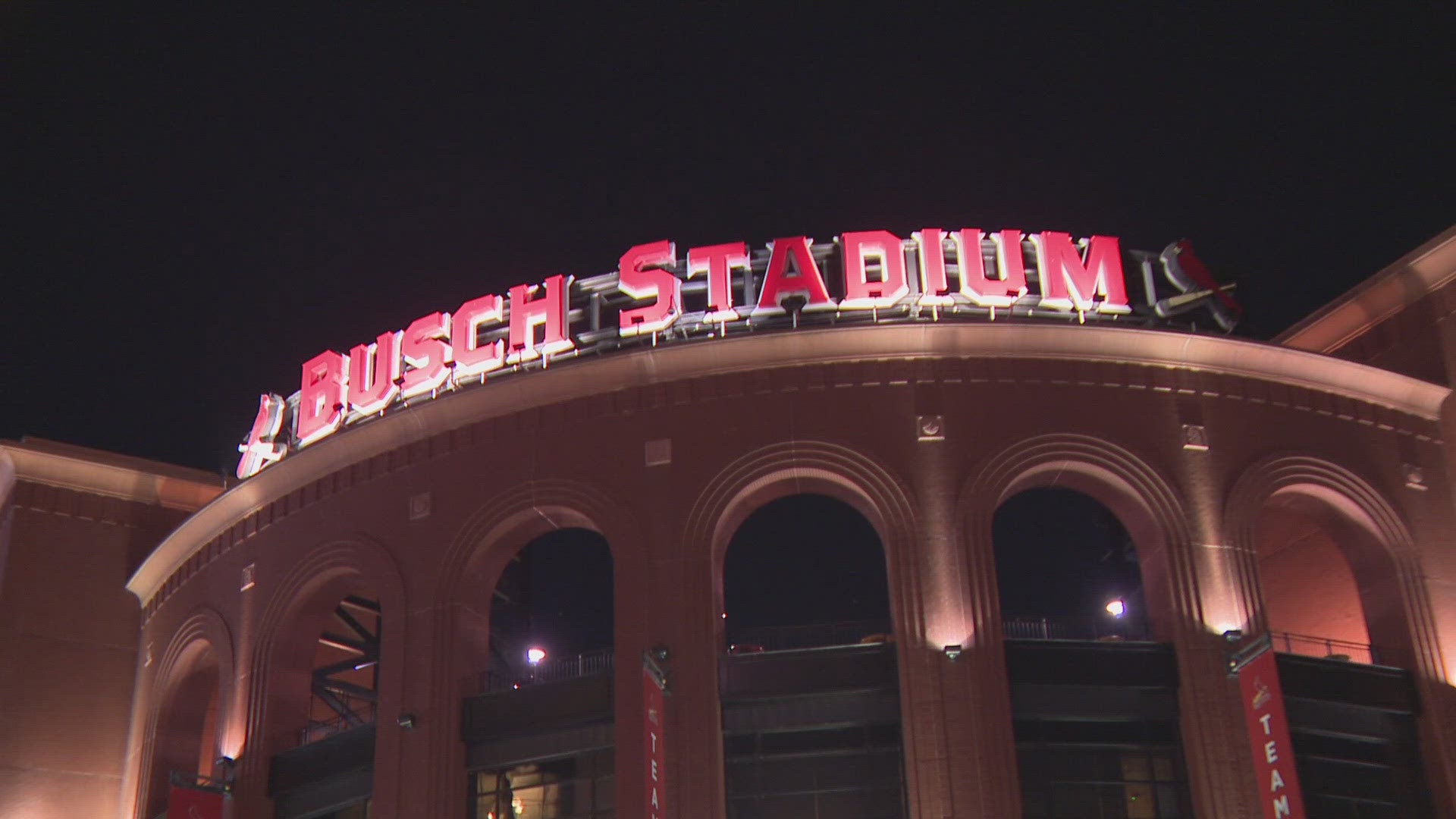ST. LOUIS — The Cardinals begin the second half of the season on Friday night in Cincinnati with a 50-44 record, just a half game behind the division-leading Brewers.
It’s not as good of a record as they had hoped for when the year began, but considering all of the injuries they have endured so far, they know it could be a lot worse.
The Cardinals also have to feel good that they have endured the worst part of their season. Starting on Friday, according to current won-loss records, they will have the easiest remaining schedule of any team in the majors.
Of their remaining 68 games, more than half – 38 – will be against the Reds (11), Cubs (11), Pirates (9) and Nationals (7) – who are a combined 92 games under .500.
Here is a look back at the five biggest disappointments and surprises from the first half of the year, plus a look ahead at the five biggest questions the team faces in the final 2 ½ months:
Disappointments
Jack Flaherty – The Cardinals knew in spring training that he would have a late start to his season because of a shoulder issue, but they likely didn’t think they would reach the All-Star break and see that Flaherty had made only three starts which lasted a combined eight innings before going back on the injured list. For Flaherty and the Cardinals, injuries might be taking a toll on the pitcher who looked at the end of 2019 like he was ready to join the ranks of the top pitchers in the league. Since then, he has thrown only 126 2/3 innings in 2 ½ years.
Yadier Molina – Sore knees was the reason provided for Molina going on the injured list in June, and likely was part of the reason he started only 35 of the team’s first 65 games behind the plate before then. Hitting .213 and playing only half the team likely isn’t what the Cardinals expected from Molina in the final season of his career. More concerning than his on-field performance, however, was the Cardinals’ decision to let him leave the team when he went on the IL and do his rehab at home in Puerto Rico. The team, and especially top catching prospect Ivan Herrera, could have benefitted from being around Molina on a daily basis.
Tyler O’Neill – Coming off a year when he was finally able to stay on the field, playing 138 games and hitting 34 homers, the Cardinals were counting on the same kind of season from O’Neill this year. Instead, injuries returned, and he spent two separate stints on the IL, missing 42 of the Cardinals’ first 94 games. When he has been in the lineup, O’Neill hasn’t shown the same level of production, hitting just four homers in 176 at-bats.
Paul DeJong – The Cardinals were hoping this would be a bounce-back year for the former All-Star after two disappointing seasons, but that hasn’t happened. Another slow start – hitting just .130 in his first 24 games – led to DeJong’s demotion to Memphis, where he has hit some home runs but is still trying to find the answer to his offensive woes.
Andrew Knizner – Molina’s need to take more days off than usual when he was on the roster, and going on the IL for more than a month, gave Knizner the chance at playing time that he hasn’t had the last two seasons as Molina’s backup. Unfortunately, he hasn’t taken advantage of that chance, hitting just .207 at the break. His average was even worse, .173, before going 8-of-17 in his last seven games, a trend the Cardinals hope will continue when the second half begins.
Surprises
Brendan Donovan – About a year after he was playing in Class A Peoria, Donovan found himself in the majors – and as much as the Cardinals liked him as a prospect, they couldn’t have expected him to be leading all NL rookies in hits, average, doubles and RBIs at the All-Star break. Donovan has done that starting games at six defensive positions, playing well at all of them. Finding a way to keep him on the field when some of the injured Cardinals return will be something manager Oli Marmol needs to figure out.
Andre Pallante – The only rookie to make the Cardinals’ opening day roster, Pallante’s performance in middle relief, and injuries, gave him a chance to move into the rotation. His 70 innings are the third most by a rookie in the NL, and his 3.34 ERA is among the rookie leaders. Whether he remains in the rotation or goes back to the bullpen will likely be determined by two factors – where can he fill a bigger need for the team, and how many innings the Cardinals want Pallante to throw this season. He threw a combined 115 innings last year over his minor-league season followed by a stint in the Arizona Fall League.
Ryan Helsley – As good as Helsley had been so far in his career, coming off minor surgery on his knee and elbow did leave a little uncertainty coming into this season about how he would pitch. Anybody who saw the two 103-miles per hour fastballs he threw in his scoreless inning in the All-Star Game on Tuesday night knows that is no longer a concern. Helsley has become one of the top closers in the league, a reassuring presence in the back of the Cardinals’ bullpen.
Paul Goldschmidt – It might seem a little odd on the surface to say that Goldschmidt’s performance in the first half of the season was a surprise, but not many likely would have predicted he would be leading the league with a .330 average, 35 points higher than his career average, helping establish him as the favorite to be the league MVP. He also leads the league in runs, on- base percentage, slugging percentage and OPS. On Tuesday night he became only the second Cardinal since 1974 to hit a home run in the All-Star Game.
Zack Thompson – It’s still a small sample size, but the lefthanded Thompson’s performance as a reliever has been impressive. In nine games, covering 15 innings, the former first-round draft pick has allowed only seven hits while facing 54 batters with four walks, 12 strikeouts and a 0.60 ERA. Including his one start, lefthanders are just 3-of-26 against Thompson this season. Having Thompson, Jordan Hicks and perhaps Pallante as the bridge relievers to get a game to Helsley could be a key to the Cardinals’ success the rest of the season.
Biggest questions
Will the team get any help from Flaherty?
The Cardinals wished they knew the answer to this question. As it stands now, they know the earliest he can return from the 60-day injured list is late August, and that’s if Flaherty doesn’t experience any more problems when he actually starts pitching again. No doubt the Cardinals will want him to make more rehab starts than he did earlier this year, and that could delay his return perhaps into September. By that point, it’s probably best if they don’t count on getting much out of him and just hope he can be fully recovered before the start of next season.
What about Molina?
The Cardinals at least have a plan for Molina’s return, but how well his knees feel will likely be the biggest factor in how often Molina plays, and how well he will play. He is set to begin a rehab assignment in the minors near the end of this month and rejoin the team in early August. The hope has to be that Molina will at least to be able to start the nine games he needs with Adam Wainwright to establish the record for most career starts by a pitcher and catcher. Whether he will feel well enough to start one or two more games a week is the question. At least being back with the team, even on days he doesn’t play, will be a positive development.
Can they win without adding a starting pitcher?
The Cardinals begin the second half with a rotation of Wainwright, Miles Mikolas, Pallante and Steven Matz, who saw his return from the injured list rained out last Sunday. Dakota Hudson is expected to come off the IL in about a week. Matz’s last start was May 17, and when he did pitch, he had a 6.03 ERA. He will need to be better, and more durable. Adding a starter would allow Pallante to move back to the bullpen, but the question will be how much of a stomach the front-office has to make a big deal, likely requiring them to trade off at least one of their top prospects, to acquire a starter who would be better than what they have. The Cardinals probably have enough pitching, if healthy, to get through the season without making a deal, but likely not enough to make a deep playoff run even if they do win the division or earn a wildcard spot.
Has Dylan Carlson’s play in center field made Harrison Bader a trade candidate?
This is the wild-card question the Cardinals didn’t see coming when the year began. Bader going out with a foot injury let Carlson move to center on a regular basis, and he seized the opportunity and showed that he is more than capable of playing the position defensively. He is a different kind of defender than Bader, but still very effective. With Bader under contract for next season, a team might be more willing to trade for him, especially a team more interested in his Gold Glove caliber defense than his offense. Even if a trade doesn’t materialize before the Aug. 2 deadline, it’s likely something the Cardinals and any potential trade partners will explore during the off-season.
Will they give Alec Burleson a chance?
The answer to this question could be tied to two factors – whether the Cardinals trade an outfielder off their major-league roster before the deadline, or if more than one outfielder gets injured. Burleson’s performance at Triple A Memphis has certainly made him deserving of a promotion. The 23-year-old lefthanded hitter has produced a .341 average with 16 homers, 16 doubles and 65 RBIs in 78 games, which other teams have certainly noticed, also likely meaning his name will come up in any trade conversations. What is working against Burleson getting a call to the majors is that he does not have to go on the 40-man roster for another year and unless he will be playing regularly, the Cardinals likely would rather use that roster spot on a player they do not want to risk losing in this winter’s Rule 5 draft.



